Odabrani naučni radovi
2021
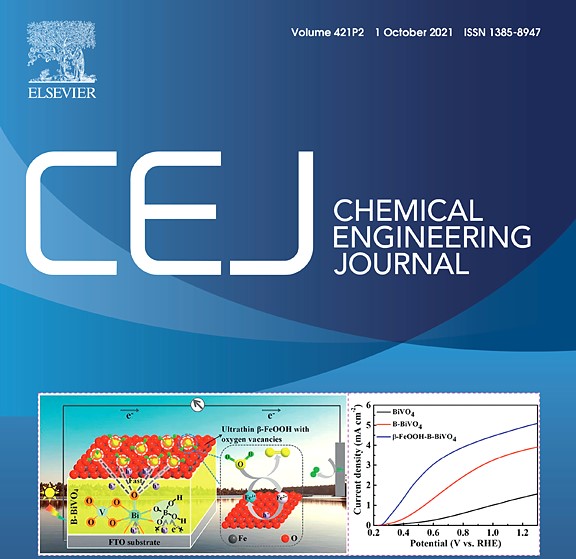
Dimić, D S; Milenković, D A; Avdović, E H; Nakarada, Đ J; Marković, J M Dimitrić; Marković, Z S
Advanced oxidation processes of coumarins by hydroperoxyl radical: An experimental and theoretical study, and ecotoxicology assessment Journal Article
In: Chemical Engineering Journal, vol. 424, 2021, (Impakt faktor časopisa: 10.652).
@article{Dimić2021,
title = {Advanced oxidation processes of coumarins by hydroperoxyl radical: An experimental and theoretical study, and ecotoxicology assessment},
author = {D S Dimić and D A Milenković and E H Avdović and Đ J Nakarada and J M Dimitrić Marković and Z S Marković},
url = {https://www.scopus.com/inward/record.uri?eid=2-s2.0-85107044513&doi=10.1016%2fj.cej.2021.130331&partnerID=40&md5=283a47d9ba97fbf91fc81ba21a777ea6},
doi = {10.1016/j.cej.2021.130331},
year = {2021},
date = {2021-01-01},
journal = {Chemical Engineering Journal},
volume = {424},
abstract = {Coumarin derivatives are an example of stable molecules with very complex biodegradation routes in wastewaters. The use of advanced oxidation processes offers a way to their chemical modification to less toxic products. In this study, the experimental reactivity of 4-hydroxycoumarin (1) and its two derivatives towards hydroperoxyl radical (HOO•) was proven by the ESR spectroscopy. The absence of measurable concentration of carbon- and oxygen-centered radicals, except for DEPMPO-HOO• adduct, showed that stable products were formed in the reaction. Two novel mechanisms, namely hydrogen atom abstraction - radical–radical coupling (HAT-RRC) and radical adduct formation-hydrogen atom abstraction (RAF-HAA) were suggested as possible reaction routes between HOO• and coumarin derivatives. Thermodynamic and kinetic parameters were investigated in detail to explain the plausibility of these two mechanisms with special emphasis on the determination of the most active positions. The theoretical calculations were accompanied by the Natural Bond Orbital Theory and Quantum Theory of Atoms in Molecules. The thermodynamically preferred mechanism of the reaction was RAF-HAA, while the highest reaction rate was obtained for the position C3 of 1. The preferred mechanism was further verified by the UV–Vis spectrophotometry and excited state optimization. The examined routes lead to the formation of stable products with lower toxicity towards aquatic organisms, as shown by the eco-toxicology assessment. © 2021},
note = {Impakt faktor časopisa: 10.652},
keywords = {},
pubstate = {published},
tppubtype = {article}
}
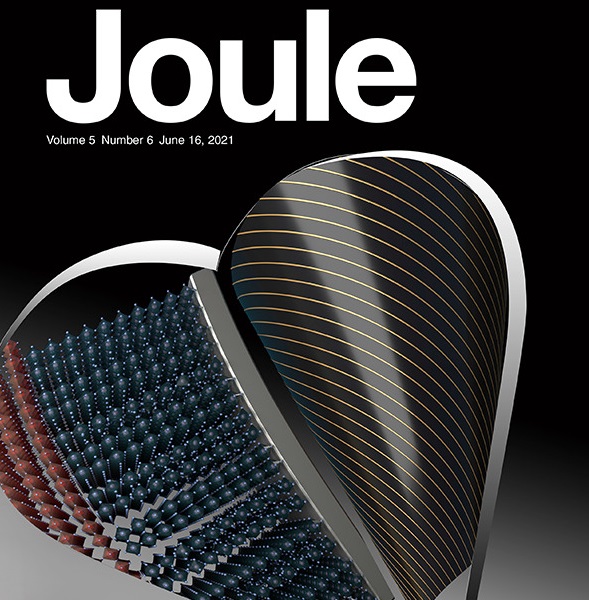
Pašti, I A; Mentus, S V
“Spot the difference”—just a game or the game-changer? Journal Article
In: Joule, vol. 5, no. 3, pp. 519-521, 2021, (Impakt faktor časopisa: 41.248).
@article{Pašti2021519,
title = {“Spot the difference”—just a game or the game-changer?},
author = {I A Pašti and S V Mentus},
url = {https://www.scopus.com/inward/record.uri?eid=2-s2.0-85102377113&doi=10.1016%2fj.joule.2021.02.017&partnerID=40&md5=df34ce06e7a1179b8a047a94c1e65a66},
doi = {10.1016/j.joule.2021.02.017},
year = {2021},
date = {2021-01-01},
journal = {Joule},
volume = {5},
number = {3},
pages = {519-521},
abstract = {Recently in iScience, Hodnik et al. provide compelling evidence that the standard top-down investigation of electrocatalyst stability fails to provide the fundamental understanding of nanoparticle structure-stability relationships. Instead, the authors provide a new bottom-up strategy, allowing researchers to study the structural evolution of individual nanoparticles and a deep link to their structure-stability properties. © 2021 Elsevier Inc.
Recently in iScience, Hodnik et al. provide compelling evidence that the standard top-down investigation of electrocatalyst stability fails to provide the fundamental understanding of nanoparticle structure-stability relationships. Instead, the authors provide a new bottom-up strategy, allowing researchers to study the structural evolution of individual nanoparticles and a deep link to their structure-stability properties. © 2021 Elsevier Inc.},
note = {Impakt faktor časopisa: 41.248},
keywords = {},
pubstate = {published},
tppubtype = {article}
}
Recently in iScience, Hodnik et al. provide compelling evidence that the standard top-down investigation of electrocatalyst stability fails to provide the fundamental understanding of nanoparticle structure-stability relationships. Instead, the authors provide a new bottom-up strategy, allowing researchers to study the structural evolution of individual nanoparticles and a deep link to their structure-stability properties. © 2021 Elsevier Inc.
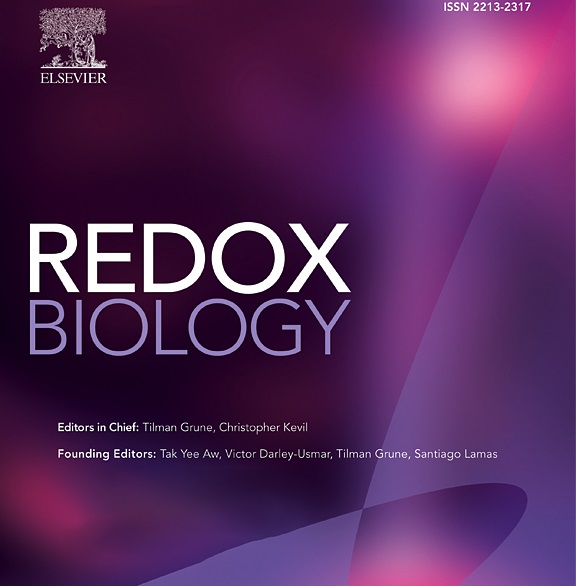
Grippo, V; Mojovic, M; Pavicevic, A; Kabelac, M; Hubatka, F; Turanek, J; Zatloukalova, M; Freeman, B A; Vacek, J
Electrophilic characteristics and aqueous behavior of fatty acid nitroalkenes Journal Article
In: Redox Biology, vol. 38, 2021, (Impakt faktor časopisa: 11.799).
@article{Grippo2021,
title = {Electrophilic characteristics and aqueous behavior of fatty acid nitroalkenes},
author = {V Grippo and M Mojovic and A Pavicevic and M Kabelac and F Hubatka and J Turanek and M Zatloukalova and B A Freeman and J Vacek},
url = {https://www.scopus.com/inward/record.uri?eid=2-s2.0-85096158093&doi=10.1016%2fj.redox.2020.101756&partnerID=40&md5=2da8f31c4fb805691910ec16078ae42b},
doi = {10.1016/j.redox.2020.101756},
year = {2021},
date = {2021-01-01},
journal = {Redox Biology},
volume = {38},
abstract = {Fatty acid nitroalkenes (NO2-FA) are endogenously-generated products of the reaction of metabolic and inflammatory-derived nitrogen dioxide (.NO2) with unsaturated fatty acids. These species mediate signaling actions and induce adaptive responses in preclinical models of inflammatory and metabolic diseases. The nitroalkene substituent possesses an electrophilic nature, resulting in rapid and reversible reactions with biological nucleophiles such as cysteine, thus supporting post-translational modifications (PTM) of proteins having susceptible nucleophilic centers. These reactions contribute to enzyme regulation, modulation of inflammation and cell proliferation and the regulation of gene expression responses. Herein, focus is placed on the reduction-oxidation (redox) characteristics and stability of specific NO2-FA regioisomers having biological and clinical relevance; nitro-oleic acid (NO2-OA), bis-allylic nitro-linoleic acid (NO2-LA) and the conjugated diene-containing nitro-conjugated linoleic acid (NO2-cLA). Cyclic and alternating-current voltammetry and chronopotentiometry were used to the study of reduction potentials of these NO2-FA. R–NO2 reduction was observed around −0.8 V (vs. Ag/AgCl/3 M KCl) and is related to relative NO2-FA electrophilicity. This reduction process could be utilized for the evaluation of NO2-FA stability in aqueous milieu, shown herein to be pH dependent. In addition, electron paramagnetic resonance (EPR) spectroscopy was used to define the stability of the nitroalkene moiety under aqueous conditions, specifically under conditions where nitric oxide (.NO) release could be detected. The experimental data were supported by density functional theory calculations using 6–311++G (d,p) basis set and B3LYP functional. Based on experimental and computational approaches, the relative electrophilicities of these NO2-FA are NO2-cLA >> NO2-LA > NO2-OA. Micellarization and vesiculation largely define these biophysical characteristics in aqueous, nucleophile-free conditions. At concentrations below the critical micellar concentration (CMC), monomeric NO2-FA predominate, while at greater concentrations a micellar phase consisting of self-assembled lipid structures predominates. The CMC, determined by dynamic light scattering in 0.1 M phosphate buffer (pH 7.4) at 25 °C, was 6.9 (NO2-LA) 10.6 (NO2-OA) and 42.3 μM (NO2-cLA), respectively. In aggregate, this study provides new insight into the biophysical properties of NO2-FA that are important for better understanding the cell signaling and pharmacological potential of this class of mediators. © 2020 The Authors},
note = {Impakt faktor časopisa: 11.799},
keywords = {},
pubstate = {published},
tppubtype = {article}
}
2020
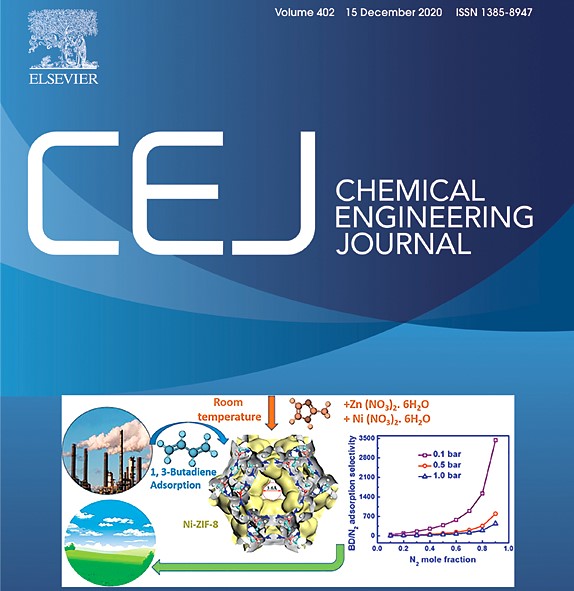
Milenković, D A; Dimić, D S; Avdović, E H; Amić, A D; Marković, J M Dimitrić; Marković, Z S
Advanced oxidation process of coumarins by hydroxyl radical: Towards the new mechanism leading to less toxic products Journal Article
In: Chemical Engineering Journal, vol. 395, no. 124971, 2020, (Impakt faktor časopisa: 10.652).
@article{ZMarkovic2019,
title = {Advanced oxidation process of coumarins by hydroxyl radical: Towards the new mechanism leading to less toxic products},
author = {D A Milenković and D S Dimić and E H Avdović and A D Amić and J M Dimitrić Marković and Z S Marković},
url = {https://www.sciencedirect.com/science/article/abs/pii/S1385894720309633?via%3Dihub},
doi = {10.1016/j.cej.2020.124971},
year = {2020},
date = {2020-09-01},
journal = {Chemical Engineering Journal},
volume = {395},
number = {124971},
abstract = {The excessive use of coumarins and their derivatives is becoming an ecological concern due to their toxicity towards different organisms. One of the possible ways of their removal is the advanced oxidation processes. The oxidative breakdown of 4-hydroxycoumarin and its two derivatives, induced by a very powerful oxidizer hydroxyl radical (HO•), was investigated experimentally and theoretically. The new mechanism, namely radical adduct formation followed by hydrogen atom abstraction (RAF-HAA), was proposed. The thermodynamic parameters and rate constants, calculated by the Transition State Theory for several active positions indicated a possible reaction in which less toxic products were obtained, as confirmed by the ecotoxicity assessment. The mechanism included the reaction with two HO• and the introduction of an additional OH group to the structure. These results were compared to the more common mechanism that includes HAA between the OH group of 4-hydroxycoumarin and HO•. Based on the Quantum Theory of Atoms in Molecules and Natural Bond Orbital theory the exo-coupled electron transfer (PCET) mechanism was pointed out as a dominant pathway. Radical addiction with another HO•, followed by keto-enol tautomerism, led to the formation of the stable final product, identical to one obtained in the RAF-HAA mechanism. The reaction rates for RAF-HAA were higher then those for pure HAA and reactions were more spontaneous, therefore leading to the conclusion that the newly proposed mechanism could be a dominant pathway for the aromatic molecules’ breakdown in the advanced oxidation processes.},
note = {Impakt faktor časopisa: 10.652},
keywords = {},
pubstate = {published},
tppubtype = {article}
}
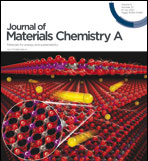
Lačnjevac, U; Vasilić, R; Dobrota, A; Đurđić, S; Tomanec, O; Zbořil, R; Mohajernia, S; Nguyen, N T; Skorodumova, N; Manojlović, D; Elezović, N; Pašti, I; Schmuki, P
High-performance hydrogen evolution electrocatalysis using proton-intercalated TiO2nanotube arrays as interactive supports for Ir nanoparticles Journal Article
In: Journal of Materials Chemistry A, vol. 8, no. 43, pp. 22773-22790, 2020, (Impakt faktor časopisa: 12.732).
@article{Lačnjevac202022773,
title = {High-performance hydrogen evolution electrocatalysis using proton-intercalated TiO2nanotube arrays as interactive supports for Ir nanoparticles},
author = {U Lačnjevac and R Vasilić and A Dobrota and S Đurđić and O Tomanec and R Zbořil and S Mohajernia and N T Nguyen and N Skorodumova and D Manojlović and N Elezović and I Pašti and P Schmuki},
url = {https://www.scopus.com/inward/record.uri?eid=2-s2.0-85096105811&doi=10.1039%2fd0ta07492f&partnerID=40&md5=a143ddd17acc1ebc897636d998ae37e3},
doi = {10.1039/d0ta07492f},
year = {2020},
date = {2020-01-01},
journal = {Journal of Materials Chemistry A},
volume = {8},
number = {43},
pages = {22773-22790},
abstract = {Developing ultraefficient electrocatalytic materials for the hydrogen evolution reaction (HER) with low content of expensive platinum group metals (PGMs) via low-energy-input procedures is the key to the successful commercialization of green water electrolysis technologies for sustainable production of high-purity hydrogen. In this study, we report a facile room-temperature synthesis of ultrafine metallic Ir nanoparticles on conductive, proton-intercalated TiO2 nanotube (H-TNT) arrays via galvanic displacement. A series of experiments demonstrate that a controlled transformation of the H-TNT surface microstructure from neat open-top tubes to disordered nanostripe bundles ("nanograss") is highly beneficial for providing an abundance of exposed Ir active sites. Consequently, for nanograss-engineered composites, outstanding HER activity metrics are achieved even at very low Ir(iii) precursor concentrations. An optimum Ir@TNT cathode loaded with 5.7 μgIr cm-2 exhibits an overpotential of -63 mV at -100 mA cm-2 and a mass activity of 34 A mgIr-1 at -80 mV under acidic conditions, along with excellent catalytic durability and structural integrity. Density functional theory (DFT) simulations reveal that the hydrogen-rich TiO2 surface not only stabilizes the deposited Ir and weakens its H binding strength to a moderate intensity, but also actively takes part in the HER mechanism by refreshing the Ir catalytic sites near the Ir|H-TiO2 interface, thus substantially promoting H2 generation. The comprehensive characterization combined with theory provides an in-depth understanding of the electrocatalytic behavior of H-TNT supported PGM nanoparticles and demonstrates their high potential as competitive electrocatalyst systems for the HER. This journal is © The Royal Society of Chemistry.},
note = {Impakt faktor časopisa: 12.732},
keywords = {},
pubstate = {published},
tppubtype = {article}
}
2019

Rafailović, L D; Gammer, C; Ebner, C; Rentenberger, C; Jovanović, A Z; Pašti, I A; Skorodumova, N V; Karnthaler, Peter H
High density of genuine growth twins in electrodeposited aluminum Journal Article
In: Science Advances, vol. 5, no. 10, 2019, ISSN: 23752548, (Rad objavljen u časopisu iz grupacije Science. Impakt faktor časopisa: 12.804).
@article{Rafailović2019,
title = {High density of genuine growth twins in electrodeposited aluminum},
author = {L D Rafailović and C Gammer and C Ebner and C Rentenberger and A Z Jovanović and I A Pašti and N V Skorodumova and Peter H Karnthaler},
url = {https://www.scopus.com/inward/record.uri?eid=2-s2.0-85073878959&doi=10.1126%2fsciadv.aax3894&partnerID=40&md5=52c74a17024b13f3800adaa63bff7f49},
doi = {10.1126/sciadv.aax3894},
issn = {23752548},
year = {2019},
date = {2019-11-09},
journal = {Science Advances},
volume = {5},
number = {10},
publisher = {American Association for the Advancement of Science},
abstract = {We demonstrate electrodeposition as a synthesis method for fabrication of Al coatings, up to 10 m thick, containing a high density of genuine growth twins. This has not been expected since the twin boundary energy of pure Al is very high. TEM methods were used to analyze deposited Al and its nanoscaled twins. DFT methods confirmed that the influence of the substrate is limited to the layers close to the interface. Our findings are different from those achieved by sputtering of Al coatings restricted to a thickness less than 100 nm with twins dominated by epitaxial effects. We propose that in the case of electrodeposition, a high density of twins arises because of fast nucleation and is additionally promoted by a monolayer of adsorbed hydrogen originating from water impurities. Therefore, electrodeposition is a viable approach for tailoring the structure and properties of thicker, deposited Al coatings reinforced by twins. Copyright © 2019 The Authors, some rights reserved; exclusive licensee American Association for the Advancement of Science. No claim to original U.S. Government Works. Distributed under a Creative Commons Attribution License 4.0 (CC BY).},
note = {Rad objavljen u časopisu iz grupacije Science. Impakt faktor časopisa: 12.804},
keywords = {},
pubstate = {published},
tppubtype = {article}
}
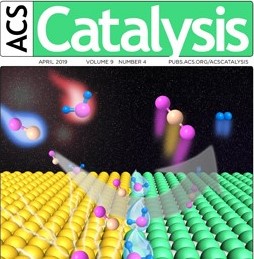
Pašti, I A; Fako, E; Dobrota, A S; López, N; Skorodumova, N V; Mentus, S V
Atomically Thin Metal Films on Foreign Substrates: From Lattice Mismatch to Electrocatalytic Activity Journal Article
In: ACS Catalysis, vol. 9, no. 4, pp. 3467-3481, 2019, (Impakt faktor časopisa: 12.22).
@article{Pašti20193467,
title = {Atomically Thin Metal Films on Foreign Substrates: From Lattice Mismatch to Electrocatalytic Activity},
author = {I A Pašti and E Fako and A S Dobrota and N López and N V Skorodumova and S V Mentus},
url = {https://www.scopus.com/inward/record.uri?eid=2-s2.0-85063435747&doi=10.1021%2facscatal.8b04236&partnerID=40&md5=89d47f6a6f01549ace5f13884763fdfe},
doi = {10.1021/acscatal.8b04236},
year = {2019},
date = {2019-01-01},
journal = {ACS Catalysis},
volume = {9},
number = {4},
pages = {3467-3481},
abstract = {Electrocatalytic properties of materials are governed by the electronic structure, stability, and reactivity of the surface layer which is exposed to the electrolyte. Over the years, different strategies have been developed to tailor electrocatalyst surfaces but also to reduce the cost of these materials, which is the bottleneck for any practical application. When a very thin metallic layer, intended to serve as an electrocatalyst, is placed over a substrate, its configuration is influenced by the structure of the substrate due to lattice mismatch, while the electronic structure is affected due to the strain and the electronic effects of the support. This results in altered bonding within the electrocatalyst layer and the modification of its electronic properties when compared to the pure phase. In this contribution, we address the possibilities of theoretical prediction of surface properties of atomically thin electrocatalyst films formed over different substrates, focusing on the metal side of the electrified interface. While all these properties can be calculated quite easily using modern computational techniques (but used with care), most often based on density functional theory, we also address an attractive, fast screening possibility to estimate the properties of monometallic and multimetallic overlayers using small sets of calculations on model systems. We discuss how lattice mismatch between a substrate and an overlayer can be used to predict the properties of electrocatalytic films, limitations of such approach, and a possibility of deploying of large databases which enable rapid prescreening of different support/overlayer systems for various electrocatalytic applications. © 2019 American Chemical Society.},
note = {Impakt faktor časopisa: 12.22},
keywords = {},
pubstate = {published},
tppubtype = {article}
}
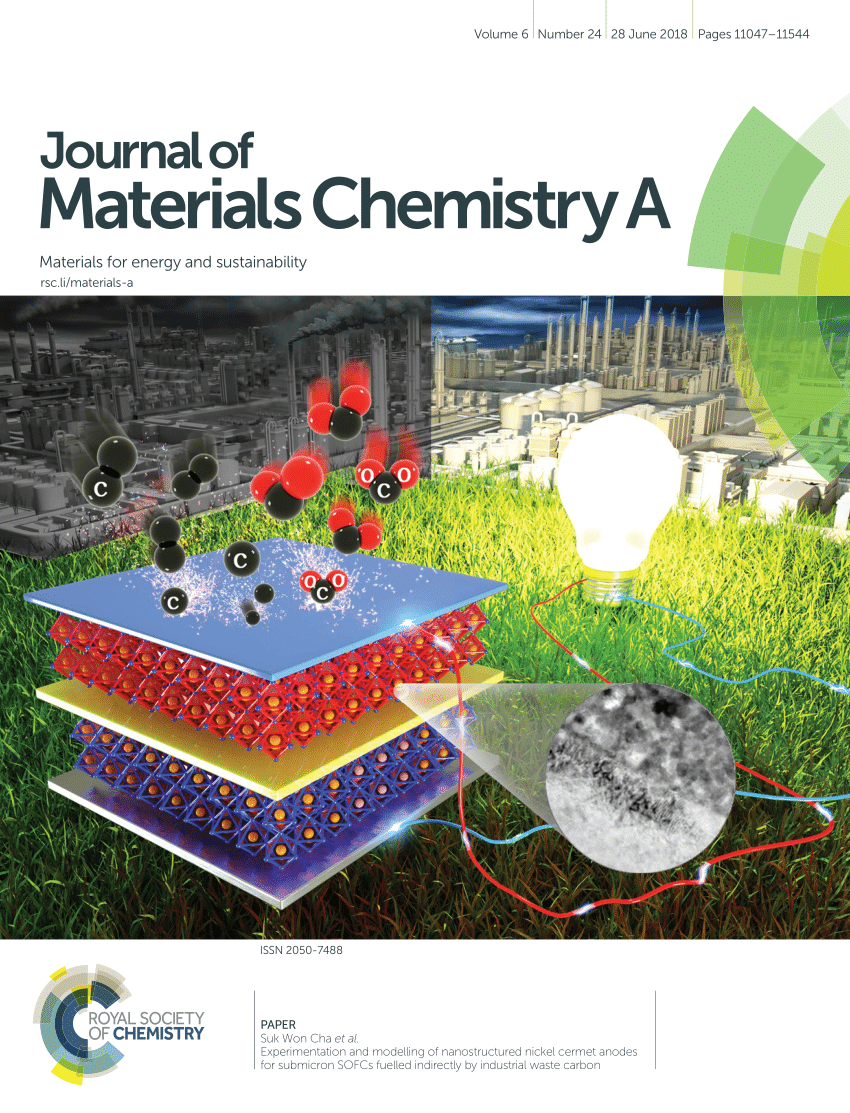
Bober, P; Pfleger, J; Pašti, I A; Gavrilov, N; Filippov, S K; Klepac, D; Trchová, M; Hlídková, H; Stejskal, J
Carbogels: Carbonized conducting polyaniline/poly(vinyl alcohol) aerogels derived from cryogels for electrochemical capacitors Journal Article
In: Journal of Materials Chemistry A, vol. 7, no. 4, pp. 1785-1796, 2019, (Impakt faktor časopisa: 10.73).
@article{Bober20191785,
title = {Carbogels: Carbonized conducting polyaniline/poly(vinyl alcohol) aerogels derived from cryogels for electrochemical capacitors},
author = {P Bober and J Pfleger and I A Pašti and N Gavrilov and S K Filippov and D Klepac and M Trchová and H Hlídková and J Stejskal},
url = {https://www.scopus.com/inward/record.uri?eid=2-s2.0-85060450295&doi=10.1039%2fc8ta09574d&partnerID=40&md5=1f773f9f42f34b61f4608255c06e39cc},
doi = {10.1039/c8ta09574d},
year = {2019},
date = {2019-01-01},
journal = {Journal of Materials Chemistry A},
volume = {7},
number = {4},
pages = {1785-1796},
abstract = {Polyaniline cryogels supported with poly(vinyl alcohol) represent soft conducting macroporous materials suitable for conversion to aerogels by freeze-drying and, subsequently, to nitrogen-containing carbogels by carbonization in an inert atmosphere at 500-600 °C. The process was followed by thermogravimetric analysis and Raman spectroscopy at the molecular level. The spectral features indicate a significant degree of structural disorder in the material due to the extensive nitrogen and oxygen incorporation into the carbon sp 2 network, which is important for the improvement of capacitive performance. The macroporous morphology is preserved after carbonization but the specific surface area increased from 12 to 680 m 2 g -1 after exposure to 500 °C in an inert atmosphere. The original conductivity of the cryogel swollen with an acid solution, 0.07 S cm -1 , was reduced to 2 × 10 -4 S cm -1 for the aerogel and again to 10 -9 S cm -1 as the carbonization progressed. The impedance spectra display Maxwell-Wagner-Sillars relaxation typical of heterogeneous composite systems with the contribution of ionic conductivity. The decrease in conductivity is in agreement with the significant drop in the static dielectric constant observed by broad-band dielectric spectroscopy and decrease in the spin number determined by electron paramagnetic resonance spectroscopy. Switching in the capacitive response from that dominated by faradaic surface processes at lower treatment temperatures to that of double-layer charging at elevated temperatures is evidenced, while the correlation between surface spin density and specific capacitance is emphasized. The results can be used as guidance for the rational design of novel active materials for electrochemical capacitors. © 2019 The Royal Society of Chemistry.},
note = {Impakt faktor časopisa: 10.73},
keywords = {},
pubstate = {published},
tppubtype = {article}
}
2018
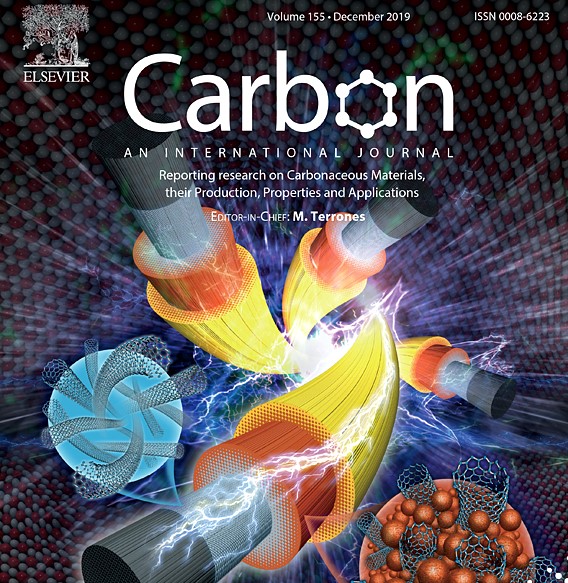
Vujković, M; Bajuk-Bogdanović, D; Matović, L; Stojmenović, M; Mentus, S
In: Carbon, vol. 138, pp. 369-378, 2018, (Rad za koji je dobijena nagrada - Najbolji naučni rad mladih naučnih radnika Univerziteta u Beogradu 2018. godine).
@article{Vujković2018369,
title = {Mild electrochemical oxidation of zeolite templated carbon in acidic solutions, as a way to boost its charge storage properties in alkaline solutions},
author = {M Vujković and D Bajuk-Bogdanović and L Matović and M Stojmenović and S Mentus},
url = {https://www.scopus.com/inward/record.uri?eid=2-s2.0-85053199179&doi=10.1016%2fj.carbon.2018.07.053&partnerID=40&md5=70ccb7b4461b89b7b2db8015a9314134},
doi = {10.1016/j.carbon.2018.07.053},
year = {2018},
date = {2018-01-01},
journal = {Carbon},
volume = {138},
pages = {369-378},
abstract = {Coulombic capacity of zeolite-templated carbon (ZTC) measured in alkaline solution was roughly doubled by a previous potentiodynamic treatment in sulfuric acidic solution. In order to explain the reasons of this capacity improvement, the changes in chemical composition of ZTC surface during its pretreatment in sulfuric acid either by simple immersion, or by potentiodynamic polarization, and during subsequent potentiodynamic polarization in KOH solutions, were studied by means of TG/DTA, FTIR spectroscopy and Raman spectroscopy. The results of this study open some novel insights in understanding of very peculiar carbon electrochemistry. The observed changes in surface chemistry include i) fast adsorption of H 2 O and formation of OH − and epoxide groups on immersion in sulfuric acid, ii) the multiplication of concentration of H 2 O/OH − and epoxide groups during potentiodynamic cycling in sulfuric acid and iii) the ring-opening of epoxide groups (formed during potentiodynamic cycling in acidic solution) upon its potentiodynamic cycling in alkaline solution, according to a S N 2 type mechanism, which results in the formation of aromatic OH-containing diol compounds. © 2018 Elsevier Ltd},
note = {Rad za koji je dobijena nagrada - Najbolji naučni rad mladih naučnih radnika Univerziteta u Beogradu 2018. godine},
keywords = {},
pubstate = {published},
tppubtype = {article}
}
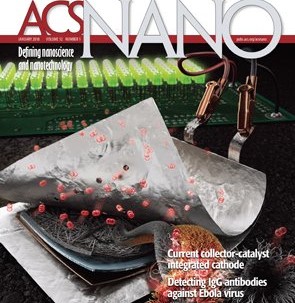
Nowakowska, S; Mazzola, F; Alberti, M N; Song, F; Voigt, T; Nowakowski, J; Wäckerlin, A; Wäckerlin, C; Wiss, J; Schweizer, W B; Broszio, M; Polley, C; Leandersson, M; Fatayer, S; Ivas, T; Baljozovic, M; Mousavi, S F; Ahsan, A; Nijs, T; Popova, O; Zhang, J; Muntwiler, M; Thilgen, C; Stöhr, M; Pasti, I A; Skorodumova, N V; Diederich, F; Wells, J; Jung, T A
Adsorbate-Induced Modification of the Confining Barriers in a Quantum Box Array Journal Article
In: ACS Nano, vol. 12, no. 1, pp. 768-778, 2018, (Impakt faktor časopisa: 13.9).
@article{Nowakowska2018768,
title = {Adsorbate-Induced Modification of the Confining Barriers in a Quantum Box Array},
author = {S Nowakowska and F Mazzola and M N Alberti and F Song and T Voigt and J Nowakowski and A Wäckerlin and C Wäckerlin and J Wiss and W B Schweizer and M Broszio and C Polley and M Leandersson and S Fatayer and T Ivas and M Baljozovic and S F Mousavi and A Ahsan and T Nijs and O Popova and J Zhang and M Muntwiler and C Thilgen and M Stöhr and I A Pasti and N V Skorodumova and F Diederich and J Wells and T A Jung},
url = {https://www.scopus.com/inward/record.uri?eid=2-s2.0-85042175038&doi=10.1021%2facsnano.7b07989&partnerID=40&md5=d5d9d6793474bca5dfd3c4c78f09201a},
doi = {10.1021/acsnano.7b07989},
year = {2018},
date = {2018-01-01},
journal = {ACS Nano},
volume = {12},
number = {1},
pages = {768-778},
abstract = {Quantum devices depend on addressable elements, which can be modified separately and in their mutual interaction. Self-assembly at surfaces, for example, formation of a porous (metal-) organic network, provides an ideal way to manufacture arrays of identical quantum boxes, arising in this case from the confinement of the electronic (Shockley) surface state within the pores. We show that the electronic quantum box state as well as the interbox coupling can be modified locally to a varying extent by a selective choice of adsorbates, here C60, interacting with the barrier. In view of the wealth of differently acting adsorbates, this approach allows for engineering quantum states in on-surface network architectures. © 2017 American Chemical Society.},
note = {Impakt faktor časopisa: 13.9},
keywords = {},
pubstate = {published},
tppubtype = {article}
}
2017
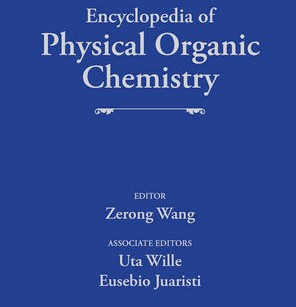
Kolar-Anić, Ljiljana; Anić, Slobodan; Čupić, Željko; Ivanović-Šašić, Ana; Pejić, Nataša; Blagojević, Slavica; Vukojević, Vladana
Chapter 23 Oscillating Reactions, Organic Reactions and Mechanisms Journal Article
In: Encyclopedia of Physical Organic Chemistry, vol. 2, no. 2, pp. 1127-1222, 2017, ISBN: 978-1-118-47045-9, (Rad objavljen po pozivu i predstavlja deo enciklopedije).
@article{Kolar-Anić2017,
title = {Chapter 23 Oscillating Reactions, Organic Reactions and Mechanisms},
author = {Ljiljana Kolar-Anić and Slobodan Anić and Željko Čupić and Ana Ivanović-Šašić and Nataša Pejić and Slavica Blagojević and Vladana Vukojević},
editor = {Zerong Wang and Uta Wille and Eusebio Juaristi},
url = {http://eu.wiley.com/WileyCDA/WileyTitle/productCd-1118470451.html#},
isbn = {978-1-118-47045-9},
year = {2017},
date = {2017-02-08},
journal = {Encyclopedia of Physical Organic Chemistry},
volume = {2},
number = {2},
pages = {1127-1222},
abstract = {This encyclopedia offers a comprehensive and easy reference to physical organic chemistry (POC) methodology and techniques. It puts POC, a classical and fundamental discipline of chemistry, into the context of modern and dynamic fields like biochemical processes, materials science, and molecular electronics. Covers basic terms and theories into organic reactions and mechanisms, molecular designs and syntheses, tools and experimental techniques, and applications and future directions
Includes coverage of green chemistry and polymerization reactions. Reviews different strategies for molecular design and synthesis of functional molecules. Discusses computational methods, software packages, and more than 34 kinds of spectroscopies and techniques for studying structures and mechanisms. Explores applications in areas from biology to materials science.
The Encyclopedia of Physical Organic Chemistry has won the 2018 PROSE Award for MULTIVOLUME REFERENCE/SCIENCE. The PROSE Awards recognize the best books, journals and digital content produced by professional and scholarly publishers. Submissions are reviewed by a panel of 18 judges that includes editors, academics, publishers and research librarians who evaluate each work for its contribution to professional and scholarly publishing. },
note = {Rad objavljen po pozivu i predstavlja deo enciklopedije},
keywords = {},
pubstate = {published},
tppubtype = {article}
}
Includes coverage of green chemistry and polymerization reactions. Reviews different strategies for molecular design and synthesis of functional molecules. Discusses computational methods, software packages, and more than 34 kinds of spectroscopies and techniques for studying structures and mechanisms. Explores applications in areas from biology to materials science.
The Encyclopedia of Physical Organic Chemistry has won the 2018 PROSE Award for MULTIVOLUME REFERENCE/SCIENCE. The PROSE Awards recognize the best books, journals and digital content produced by professional and scholarly publishers. Submissions are reviewed by a panel of 18 judges that includes editors, academics, publishers and research librarians who evaluate each work for its contribution to professional and scholarly publishing.
2015
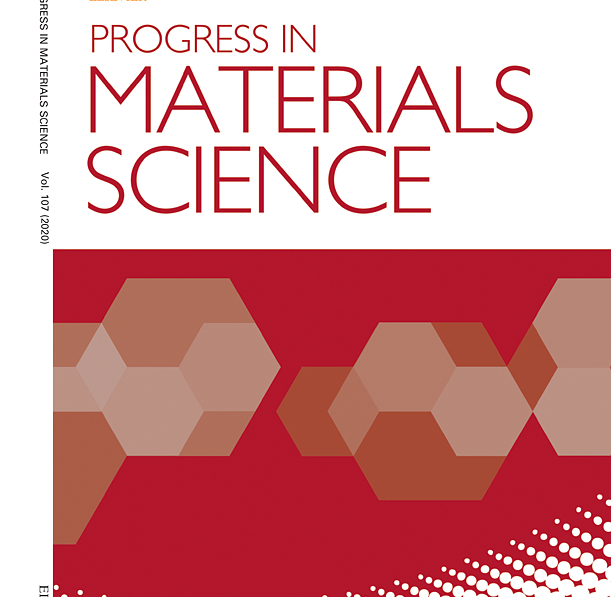
Ćirić-Marjanovic, G; Pašti, I; Mentus, S
One-dimensional nitrogen-containing carbon nanostructures Journal Article
In: Progress in Materials Science, vol. 69, pp. 61-182, 2015, (Impakt faktor časopisa: 31.083).
@article{Ćirić-Marjanovic201561,
title = {One-dimensional nitrogen-containing carbon nanostructures},
author = {G Ćirić-Marjanovic and I Pašti and S Mentus},
url = {https://www.scopus.com/inward/record.uri?eid=2-s2.0-84914149738&doi=10.1016%2fj.pmatsci.2014.08.002&partnerID=40&md5=e5ee1aebb70c80afbf55ec412574c5c3},
doi = {10.1016/j.pmatsci.2014.08.002},
year = {2015},
date = {2015-01-01},
journal = {Progress in Materials Science},
volume = {69},
pages = {61-182},
abstract = {One-dimensional nitrogen-containing carbon nanostructures (1-D NCNSs) have emerged in the past two decades as exceptionally promising nanomaterials due to their unique physical and chemical properties which enable a broad range of applications in various fields of modern technology. Recent investigations revealed that the 1-D NCNS-based materials can have a profound impact on energy conversion and storage, catalysis and electrocatalysis, sensors, electronic nanodevices, environmental protection, and biology-related applications. The aim of the present review article was to provide a comprehensive overview of scientific progress in 1-D NCNSs such as N-containing carbon nanotubes (NCNTs, e.g., single-walled (SWNCNTs), double-walled (DWNCNTs), and multi-walled NCNTs (MWNCNTs)), nanofibers (NCNFs), nanowires (NCNWs), nanorods (NCNRs), and nanohorns (NCNHs), and evaluate their future perspective. Various methods of preparation of 1-D NCNSs and their composites are summarized and discussed. The structure-properties relations of 1-D NCNSs, based on the theoretical approach and numerous relevant physico-chemical methods of characterization, were outlined. The emphasis is given to the properties of 1-D NCNSs rendered by nitrogen incorporation into the carbon matrix in order to provide deeper insight into the specific characteristics which determine materials' performances within the specific fields of applications. © 2014 Elsevier Ltd.},
note = {Impakt faktor časopisa: 31.083},
keywords = {},
pubstate = {published},
tppubtype = {article}
}
2014
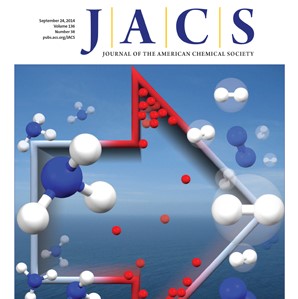
Shafaat, H S; Griese, J J; Pantazis, D A; Roos, K; Andersson, C S; Popović-Bijelić, A; Gräslund, A; Siegbahn, P E M; Neese, F; Lubitz, W; Högbom, M; Cox, N
Electronic structural flexibility of heterobimetallic Mn/Fe cofactors: R2lox and R2c proteins Journal Article
In: Journal of the American Chemical Society, vol. 136, no. 38, pp. 13399-13409, 2014, (Impakt faktor časopisa: 12.113).
@article{Shafaat201413399,
title = {Electronic structural flexibility of heterobimetallic Mn/Fe cofactors: R2lox and R2c proteins},
author = {H S Shafaat and J J Griese and D A Pantazis and K Roos and C S Andersson and A Popović-Bijelić and A Gräslund and P E M Siegbahn and F Neese and W Lubitz and M Högbom and N Cox},
url = {https://www.scopus.com/inward/record.uri?eid=2-s2.0-84924692311&doi=10.1021%2fja507435t&partnerID=40&md5=8a5b871ba120bda23237615e40cba89b},
doi = {10.1021/ja507435t},
year = {2014},
date = {2014-01-01},
journal = {Journal of the American Chemical Society},
volume = {136},
number = {38},
pages = {13399-13409},
abstract = {The electronic structure of the Mn/Fe cofactor identified in a new class of oxidases (R2lox) described by Andersson and Hö gbom [Proc. Natl. Acad. Sci. U.S.A. 2009, 106, 5633] is reported. The R2lox protein is homologous to the small subunit of class Ic ribonucleotide reductase (R2c) but has a completely different in vivo function. Using multifrequency EPR and related pulse techniques, it is shown that the cofactor of R2lox represents an antiferromagnetically coupled MnIII/ FeIII dimer linked by a μ-hydroxo/bis-μ-carboxylato bridging network. The MnIII ion is coordinated by a single water ligand. The R2lox cofactor is photoactive, converting into a second form ( R2lox Photo) upon visible illumination at cryogenic temperatures (77 K) that completely decays upon warming. This second, unstable form of the cofactor more closely resembles the MnIII/FeIII cofactor seen in R2c. It is shown that the two forms of the R2lox cofactor differ primarily in terms of the local site geometry and electronic state of the MnIII ion, as best evidenced by a reorientation of its unique 55Mn hyperfine axis. Analysis of the metal hyperfine tensors in combination with density functional theory (DFT) calculations suggests that this change is triggered by deprotonation of the μ-hydroxo bridge. These results have important consequences for the mixed-metal R2c cofactor and the divergent chemistry R2lox and R2c perform. © 2014 American Chemical Society.},
note = {Impakt faktor časopisa: 12.113},
keywords = {},
pubstate = {published},
tppubtype = {article}
}
2013
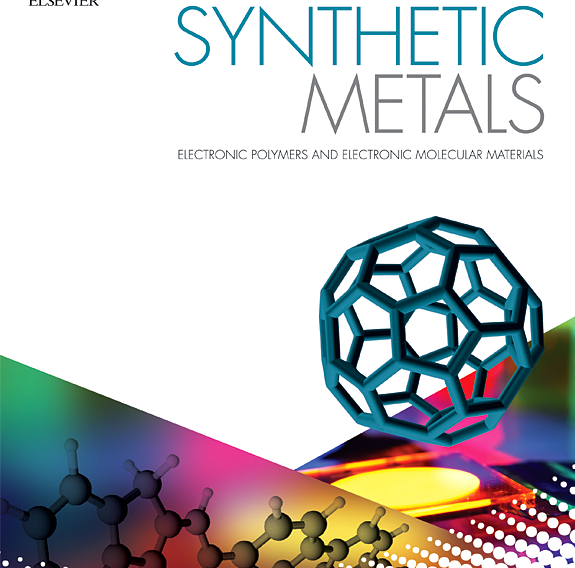
Ciric-Marjanovic, G
Recent advances in polyaniline research: Polymerization mechanisms, structural aspects, properties and applications Journal Article
In: Synthetic Metals, vol. 177, pp. 1-47, 2013, (Broj citata: 377).
@article{Ciric-Marjanovic20131,
title = {Recent advances in polyaniline research: Polymerization mechanisms, structural aspects, properties and applications},
author = {G Ciric-Marjanovic},
url = {https://www.scopus.com/inward/record.uri?eid=2-s2.0-84880065512&doi=10.1016%2fj.synthmet.2013.06.004&partnerID=40&md5=da2ab90b67c0263cdad14207f3e72b0e},
doi = {10.1016/j.synthmet.2013.06.004},
year = {2013},
date = {2013-01-01},
journal = {Synthetic Metals},
volume = {177},
pages = {1-47},
abstract = {Recent progress in synthesis, characterization, processing and application of polyaniline (PANI), with the focus on the period 2010-2012, is reviewed. Special attention was paid to new insights in the mechanism of formation of molecular/supramolecular PANI structures. An overview of PANI nanostructures is given. Formation, structure, properties and applicability of oligoanilines (OANIs) formed as intermediates and/or final products in oxidative oligomerization/polymerization of aniline are also discussed. Advances in carbonized OANI/PANI are outlined. © 2013 Elsevier B.V. All rights reserved.},
note = {Broj citata: 377},
keywords = {},
pubstate = {published},
tppubtype = {article}
}

Ćirić-Marjanovic, G
Recent advances in polyaniline composites with metals, metalloids and nonmetals Journal Article
In: Synthetic Metals, vol. 170, no. 1, pp. 31-56, 2013, (Broj citata: 117).
@article{Ćirić-Marjanovic201331,
title = {Recent advances in polyaniline composites with metals, metalloids and nonmetals},
author = {G Ćirić-Marjanovic},
url = {https://www.scopus.com/inward/record.uri?eid=2-s2.0-84875737282&doi=10.1016%2fj.synthmet.2013.02.028&partnerID=40&md5=8be9c9b21cfe39d185f626a27711cddc},
doi = {10.1016/j.synthmet.2013.02.028},
year = {2013},
date = {2013-01-01},
journal = {Synthetic Metals},
volume = {170},
number = {1},
pages = {31-56},
abstract = {The recent progress made in the period 2010-2012 in the preparation and application of polyaniline (PANI) composites with metals, metalloids and nonmetals is reviewed. A systematic overview of PANI composites with noble (Au, Pt, Pd, and Ag) and non-noble transition metals (Cu, Ni, Co, Fe, Ta, Zn, Mn, Zr, and rare earth metal Ce), as well as with main-group post-transition metals (Bi and Al) and alloys, is given. PANI/Si composites were in the focus of this review regarding PANI/metalloid composites, while an overview of PANI/nonmetal composites was focused on PANI/C, PANI/S and PANI/Se composites. Special attention was paid to PANI composites with C nanomaterials such as carbon nanotubes (CNTs) and graphene. Ternary PANI/metal/nonmetal composites are also comprehensively reviewed from an application point of view. © 2013 Elsevier B.V. All rights reserved.},
note = {Broj citata: 117},
keywords = {},
pubstate = {published},
tppubtype = {article}
}
2012
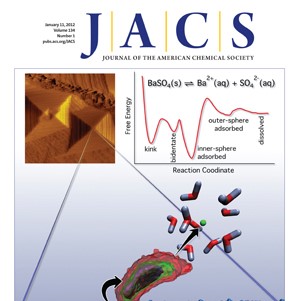
Andersson, C S; Öhrström, M; Popović-Bijelić, A; Gräslund, A; Stenmark, P; Högbom, M
The manganese ion of the heterodinuclear Mn/Fe cofactor in chlamydia trachomatis ribonucleotide reductase r2c is located at metal position 1 Journal Article
In: Journal of the American Chemical Society, vol. 134, no. 1, pp. 123-125, 2012, (Impakt faktor časopisa: 10.677).
@article{Andersson2012123,
title = {The manganese ion of the heterodinuclear Mn/Fe cofactor in chlamydia trachomatis ribonucleotide reductase r2c is located at metal position 1},
author = {C S Andersson and M Öhrström and A Popović-Bijelić and A Gräslund and P Stenmark and M Högbom},
url = {https://www.scopus.com/inward/record.uri?eid=2-s2.0-84855679844&doi=10.1021%2fja209678x&partnerID=40&md5=e00b515b28bf8d46e26717a4d57c223f},
doi = {10.1021/ja209678x},
year = {2012},
date = {2012-01-01},
journal = {Journal of the American Chemical Society},
volume = {134},
number = {1},
pages = {123-125},
abstract = {The essential catalytic radical of Class-I ribonucleotide reductase is generated and delivered by protein R2, carrying a dinuclear metal cofactor. A new R2 subclass, R2c, prototyped by the Chlamydia trachomatis protein was recently discovered. This protein carries an oxygen-activating heterodinuclear Mn(II)/Fe(II) metal cofactor and generates a radical-equivalent Mn(IV)/Fe(III) oxidation state of the metal site, as opposed to the tyrosyl radical generated by other R2 subclasses. The metal arrangement of the heterodinuclear cofactor remains unknown. Is the metal positioning specific, and if so, where is which ion located? Here we use X-ray crystallography with anomalous scattering to show that the metal arrangement of this cofactor is specific with the manganese ion occupying metal position 1. This is the position proximal to the tyrosyl radical site in other R2 proteins and consistent with the assumption that the high-valent Mn(IV) species functions as a direct substitute for the tyrosyl radical. © 2011 American Chemical Society.},
note = {Impakt faktor časopisa: 10.677},
keywords = {},
pubstate = {published},
tppubtype = {article}
}
2009
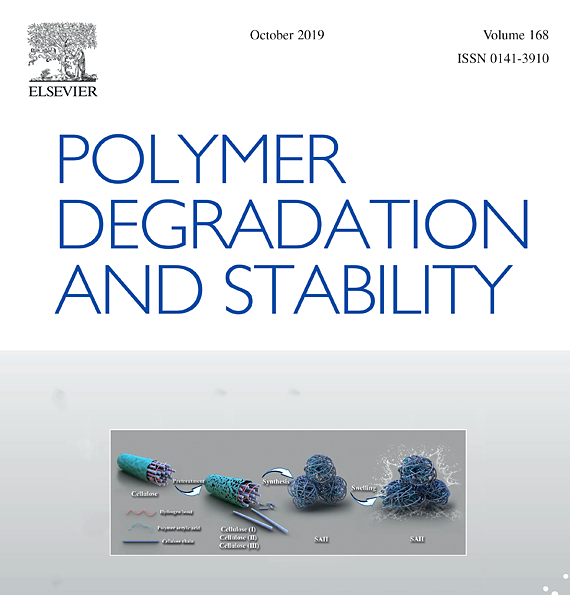
Trchová, M; Konyushenko, E N; Stejskal, J; Kovářová, J; Ćirić-Marjanović, G
The conversion of polyaniline nanotubes to nitrogen-containing carbon nanotubes and their comparison with multi-walled carbon nanotubes Journal Article
In: Polymer Degradation and Stability, vol. 94, no. 6, pp. 929-938, 2009, (Broj citata: 137).
@article{Trchová2009929,
title = {The conversion of polyaniline nanotubes to nitrogen-containing carbon nanotubes and their comparison with multi-walled carbon nanotubes},
author = {M Trchová and E N Konyushenko and J Stejskal and J Kovářová and G Ćirić-Marjanović},
url = {https://www.scopus.com/inward/record.uri?eid=2-s2.0-67349157560&doi=10.1016%2fj.polymdegradstab.2009.03.001&partnerID=40&md5=9e78076d702ce26f766db6ec263198cb},
doi = {10.1016/j.polymdegradstab.2009.03.001},
year = {2009},
date = {2009-01-01},
journal = {Polymer Degradation and Stability},
volume = {94},
number = {6},
pages = {929-938},
abstract = {Polyaniline (PANI) nanotubes were prepared by the oxidation of aniline in solutions of acetic or succinic acid, and subsequently carbonized in a nitrogen atmosphere during thermogravimetric analysis running up to 830 °C. The nanotubular morphology of PANI was preserved after carbonization. The molecular structure of the original PANI and of the carbonized products has been analyzed by FTIR and Raman spectroscopies. Carbonized PANI nanotubes contained about 8 wt.% of nitrogen. The molecular structure, thermal stability, and morphology of carbonized PANI nanotubes were compared with the properties of commercial multi-walled carbon nanotubes. © 2009 Elsevier Ltd. All rights reserved.},
note = {Broj citata: 137},
keywords = {},
pubstate = {published},
tppubtype = {article}
}
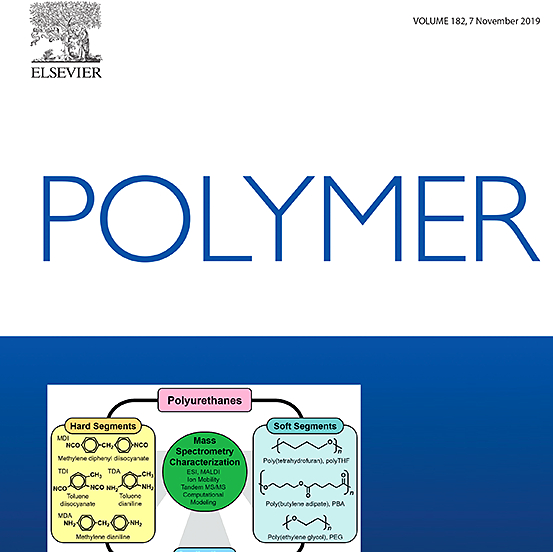
Blinova, N V; Stejskal, J; Trchová, M; Sapurina, I; Ćirić-Marjanović, G
The oxidation of aniline with silver nitrate to polyaniline-silver composites Journal Article
In: Polymer, vol. 50, no. 1, pp. 50-56, 2009, (Broj citata: 126).
@article{Blinova200950,
title = {The oxidation of aniline with silver nitrate to polyaniline-silver composites},
author = {N V Blinova and J Stejskal and M Trchová and I Sapurina and G Ćirić-Marjanović},
url = {https://www.scopus.com/inward/record.uri?eid=2-s2.0-58149203296&doi=10.1016%2fj.polymer.2008.10.040&partnerID=40&md5=fb3019396c44b320054e2c926255daa2},
doi = {10.1016/j.polymer.2008.10.040},
year = {2009},
date = {2009-01-01},
journal = {Polymer},
volume = {50},
number = {1},
pages = {50-56},
abstract = {Silver nitrate oxidizes aniline in the solutions of nitric acid to conducting nanofibrillar polyaniline. Nanofibres of 10-20 nm thickness are assembled to brushes. Nanotubes, having cavities of various diameters, and nanorods have also been present in the oxidation products, as well as other morphologies. Metallic silver is obtained as nanoparticles of ∼50 nm size accompanying macroscopic silver flakes. The reaction in 0.4 M nitric acid is slow and takes several weeks to reach 10-15% yield. It is faster in 1 M nitric acid; a high yield, 89% of theory, has been found after two weeks oxidation of 0.8 M aniline. The emeraldine structure of polyaniline has been confirmed by FTIR and UV-vis spectra. The resulting polyaniline-silver composites contain 50-80 wt.% of silver, close to the theoretical expectation of 68.9 wt.% of silver. The highest conductivity was 2250 S cm-1. The yield of a composite is lower when the reaction is carried out in dark, the effect of daylight being less pronounced at higher concentrations of reactants. © 2008 Elsevier Ltd. All rights reserved.},
note = {Broj citata: 126},
keywords = {},
pubstate = {published},
tppubtype = {article}
}
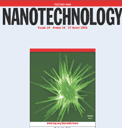
Mentus, S; Ćirić-Marjanović, G; Trchov, M; Stejskal, J
Conducting carbonized polyaniline nanotubes Journal Article
In: Nanotechnology, vol. 20, no. 24, 2009, (Broj citata: 105).
@article{Mentus2009,
title = {Conducting carbonized polyaniline nanotubes},
author = {S Mentus and G Ćirić-Marjanović and M Trchov and J Stejskal},
url = {https://www.scopus.com/inward/record.uri?eid=2-s2.0-67649147866&doi=10.1088%2f0957-4484%2f20%2f24%2f245601&partnerID=40&md5=9a8431669b14d931a29a8cac9ca2f0d8},
doi = {10.1088/0957-4484/20/24/245601},
year = {2009},
date = {2009-01-01},
journal = {Nanotechnology},
volume = {20},
number = {24},
abstract = {Conducting nitrogen-containing carbon nanotubes were synthesized by the carbonization of self-assembled polyaniline nanotubes protonated with sulfuric acid. Carbonization was carried out in a nitrogen atmosphere at a heating rate of 10 °Cmin-1 up to a maximum temperature of 800 °C. The carbonized polyaniline nanotubes which have a typical outer diameter of 100-260nm, with an inner diameter of 20-170nm and a length extending from 0.5 to 0.8νm, accompanied with very thin nanotubes with outer diameters of 8-14nm, inner diameters 3.0-4.5nm and length extending from 0.3 to 1.0νm, were observed by scanning and transmission electron microscopies. Elemental analysis showed 9wt% of nitrogen in the carbonized product. Conductivity of the nanotubular PANI precursor, amounting to 0.04Scm-1, increased to 0.7Scm-1 upon carbonization. Molecular structure of carbonized polyaniline nanotubes has been analyzed by FTIR and Raman spectroscopies, and their paramagnetic characteristics were compared with the starting PANI nanotubes by EPR spectroscopy. © 2009 IOP Publishing Ltd.},
note = {Broj citata: 105},
keywords = {},
pubstate = {published},
tppubtype = {article}
}
2008
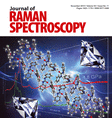
Ćirić-Marjanović, G; Trchová, M; Stejskal, J
The chemical oxidative polymerization of aniline in water: Raman spectroscopy Journal Article
In: Journal of Raman Spectroscopy, vol. 39, no. 10, pp. 1375-1387, 2008, (Broj citata: 164).
@article{Ćirić-Marjanović20081375,
title = {The chemical oxidative polymerization of aniline in water: Raman spectroscopy},
author = {G Ćirić-Marjanović and M Trchová and J Stejskal},
url = {https://www.scopus.com/inward/record.uri?eid=2-s2.0-55449124778&doi=10.1002%2fjrs.2007&partnerID=40&md5=9e99ba64caa0c651b42c8e0e37061b3f},
doi = {10.1002/jrs.2007},
year = {2008},
date = {2008-01-01},
journal = {Journal of Raman Spectroscopy},
volume = {39},
number = {10},
pages = {1375-1387},
abstract = {The structural changes of aniline oligomers and polyaniline, associated with oxidation of aniline with ammonium peroxydisulfate in aqueous solutions without any added acid, were studied. The reaction was quenched at various times and the films deposited on silicon windows have been studied in detail by Raman spectroscopy, at excitation wavelengths 633 and 514 nm. The presence of substituted phenazine structural units, in addition to ordinary benzenoid, quinonoid, and semiquinonoid structures, has been proved by the appearance of characteristic Raman bands at 1645-1630, 1420-1400, 1380-1365, ∼575, and ∼415 cm-1. The remarkable differences of the Raman spectra of oligoanilines, precipitated in the first phase of oxidative polymerization, and polyaniline nanotubes and nanorods, formed in the second stage of reaction, are discussed. Copyright © 2008 John Wiley & Sons, Ltd.},
note = {Broj citata: 164},
keywords = {},
pubstate = {published},
tppubtype = {article}
}
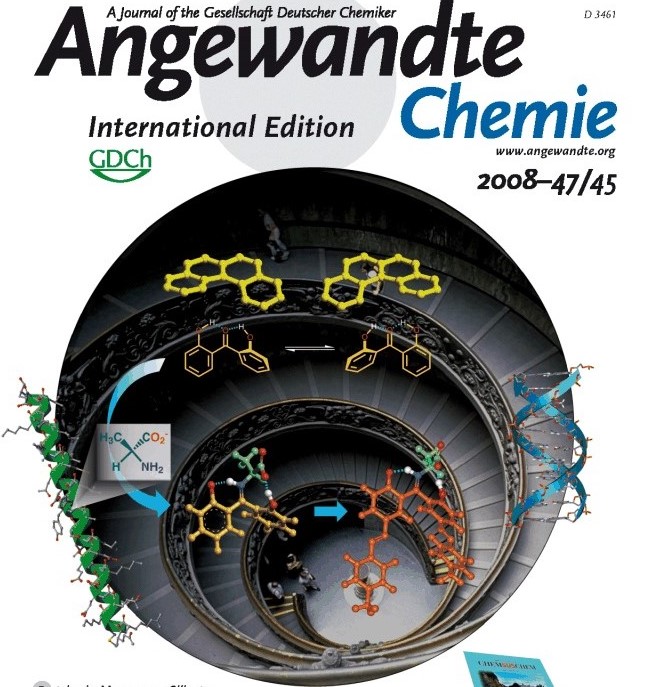
Filipović, M R; Duerr, K; Mojović, M; Simeunović, V; Zimmermann, R; Niketić, V; Ivanović-Burmazović, I
NO dismutase activity of seven-coordinate manganese(II) pentaazamacrocyclic complexes Journal Article
In: Angewandte Chemie - International Edition, vol. 47, no. 45, pp. 8735-8739, 2008, (Impakt faktor časopisa: 10.879).
@article{Filipović20088735,
title = {NO dismutase activity of seven-coordinate manganese(II) pentaazamacrocyclic complexes},
author = {M R Filipović and K Duerr and M Mojović and V Simeunović and R Zimmermann and V Niketić and I Ivanović-Burmazović},
url = {https://www.scopus.com/inward/record.uri?eid=2-s2.0-55249091126&doi=10.1002%2fanie.200801325&partnerID=40&md5=9ce584f68a0e9cf9f27296e391311168},
doi = {10.1002/anie.200801325},
year = {2008},
date = {2008-01-01},
journal = {Angewandte Chemie - International Edition},
volume = {47},
number = {45},
pages = {8735-8739},
abstract = {Redox selectivity? Seven-coordinate manganese(II) pentaazamacrocyclic complexes stimulate NO disproportionation by a novel dismutation mechanism based on the formation of labile metal-nitrosyl adducts and which is associated with the MnII/MnIII redox cycle. The metal-bound NO in these aducts has the character and reactivity of NO- and NO+ species. Ex vivo studies suggest that superoxide dismutase mimics of this kind could interfere with NO-mediated processes in biological milieu. (Chemical Equation Presented) © 2008 Wiley-VCH Verlag GmbH & Co. KGaA.},
note = {Impakt faktor časopisa: 10.879},
keywords = {},
pubstate = {published},
tppubtype = {article}
}
2007
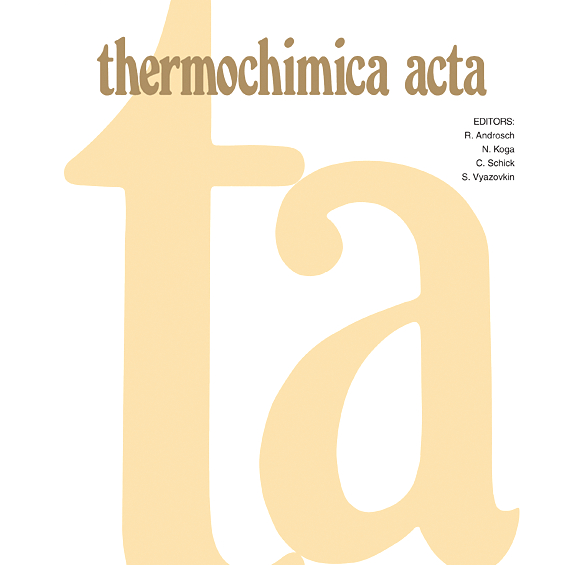
Janković, B; Adnadević, B; Jovanović, J
In: Thermochimica Acta, vol. 452, no. 2, pp. 106-115, 2007, (Broj citata: 104).
@article{Janković2007106,
title = {Application of model-fitting and model-free kinetics to the study of non-isothermal dehydration of equilibrium swollen poly (acrylic acid) hydrogel: Thermogravimetric analysis},
author = {B Janković and B Adnadević and J Jovanović},
url = {https://www.scopus.com/inward/record.uri?eid=2-s2.0-33845672194&doi=10.1016%2fj.tca.2006.07.022&partnerID=40&md5=3c2b3c432adacce5bebd2fca76f14f49},
doi = {10.1016/j.tca.2006.07.022},
year = {2007},
date = {2007-01-01},
journal = {Thermochimica Acta},
volume = {452},
number = {2},
pages = {106-115},
abstract = {The dehydration kinetics of equilibrium swollen poly (acrylic acid) hydrogel is analyzed by both model-fitting and model-free approaches. The conventional model-fitting approach assuming a fixed mechanism throughout the reaction and extract a single values of the apparent activation energy (E a ) and pre-exponential factor (A) and was found to be too simplistic. The values of Arrhenius parameters obtained in such a way are in fact an average that does not reflect changes in the reaction mechanism and kinetics with the extent of conversion. The model-free approach allows for a change of mechanism and activation energy, E a , during the course of a reaction and is therefore more realistic. The complexity of the dehydration of poly (acrylic acid) hydrogel is illustrated by the dependence of E a and A on the extent of conversion, α (0.05 ≤ α ≤ 0.98). Under non-isothermal conditions, E a decreases with α for 0 ≤ α ≤ 0.50, followed by an approximately constant value of E a during further dehydration. For 0 ≤ α ≤ 0.50, dehydration is complex, which probably involving a combination of several processes. In the constant-E a region, non-isothermal dehydration follows the three-dimensional phase boundary model (R3). The complex hydrogen-bond pattern in poly (acrylic acid) hydrogel is probably responsible for the observed dehydration behavior. An existence of compensation effect is accepted and explanation of compensation effect appearance during the hydrogel dehydration is suggested. © 2006 Elsevier B.V. All rights reserved.},
note = {Broj citata: 104},
keywords = {},
pubstate = {published},
tppubtype = {article}
}
2006
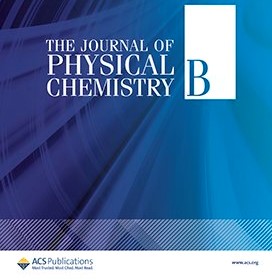
Trchová, Miroslava; Šeděnková, Ivana; Konyushenko, Elena N.; Stejskal, Jaroslav; Holler, Petr; Ćirić-Marjanović, Gordana
Evolution of polyaniline nanotubes: The oxidation of aniline in water Journal Article
In: Journal of Physical Chemistry B, vol. 110, no. 19, pp. 9461-9468, 2006, (Broj citata: 357).
@article{Trchová20069461,
title = {Evolution of polyaniline nanotubes: The oxidation of aniline in water},
author = {Miroslava Trchová and Ivana Šeděnková and Elena N. Konyushenko and Jaroslav Stejskal and Petr Holler and Gordana Ćirić-Marjanović
},
url = {https://www.scopus.com/inward/record.uri?eid=2-s2.0-33745461411&doi=10.1021%2fjp057528g&partnerID=40&md5=4376eb9b4b5ac9ce6d92982061fd6b50},
doi = {10.1021/jp057528g},
year = {2006},
date = {2006-01-01},
journal = {Journal of Physical Chemistry B},
volume = {110},
number = {19},
pages = {9461-9468},
abstract = {The course of aniline oxidation with ammonium peroxydisulfate in aqueous solutions has, been investigated. The reaction was terminated at various times and the intermediates collected. Besides the precipitates, the films deposited in situ on silicon windows have also been studied. The kinetic course of polymerization is controlled by the acidity level, which changes during the polymerization from pH 8 to a final value close to pH 1. It has two distinct exothermic phases. Gel-permeation chromatography indicates that aniline oligomers are produced at first at high pH, while polyaniline follows after the pH becomes sufficiently low. The growth of polyaniline nanotubes was observed by optical microscopy and confirmed by electron microscopy. The molecular structure of the reaction intermediates was studied in detail by FTIR spectroscopy. Oxidation products are markedly sulfonated, and they contain phenazine units. Aniline oligomers are more soluble in chloroform than the polymer fraction, which contains nanotubes. © 2006 American Chemical Society.},
note = {Broj citata: 357},
keywords = {},
pubstate = {published},
tppubtype = {article}
}
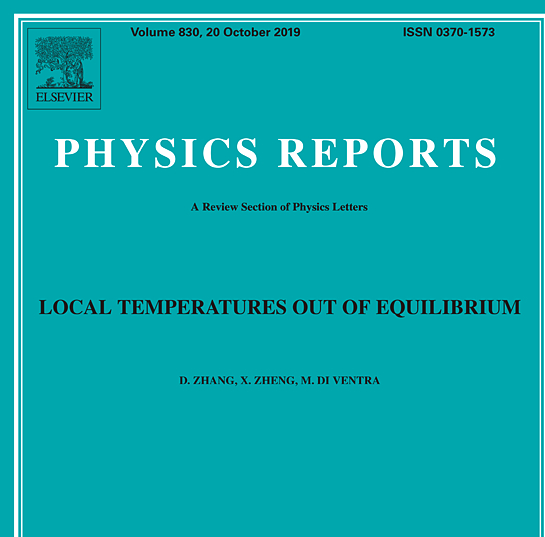
Giese, K; Petković, M; Naundorf, H; Kühn, O
Multidimensional quantum dynamics and infrared spectroscopy of hydrogen bonds Journal Article
In: Physics Reports, vol. 430, no. 4, pp. 211-276, 2006, (Broj citata: 101; Impakt faktor časopisa 10.438).
@article{Giese2006211,
title = {Multidimensional quantum dynamics and infrared spectroscopy of hydrogen bonds},
author = {K Giese and M Petković and H Naundorf and O Kühn},
url = {https://www.scopus.com/inward/record.uri?eid=2-s2.0-33745493768&doi=10.1016%2fj.physrep.2006.04.005&partnerID=40&md5=9c92cb1ab3f060d136cba97449c22be7},
doi = {10.1016/j.physrep.2006.04.005},
year = {2006},
date = {2006-01-01},
journal = {Physics Reports},
volume = {430},
number = {4},
pages = {211-276},
abstract = {Hydrogen bonds are of outstanding importance for many processes in Chemistry, Biology, and Physics. From the theoretical perspective the small mass of the proton in a hydrogen bond makes it the primary quantum nucleus and the phenomena one expects to surface in a particular clear way are, for instance, zero-point energy effects, quantum tunneling, or coherent wave packet dynamics. While this is well established in the limit of one-dimensional motion, the details of the multidimensional aspects of the dynamics of hydrogen bonds are just becoming accessible to experiments and numerical simulations. In this review we discuss the theoretical treatment of multidimensional quantum dynamics of hydrogen-bonded systems in the context of infrared spectroscopy. Here, the multidimensionality is reflected in the complex shape of linear infrared absorption spectra which is related to combination transitions and resonances, but also to mode-selective tunneling splittings. The dynamics underlying these spectra can be unravelled by means of time-resolved nonlinear infrared spectroscopy. As a fundamental theoretical ingredient we outline the generation of potential energy surfaces for gas and condensed phase nonreactive and reactive systems. For nonreactive anharmonic vibrational dynamics in the vicinity of a minimum geometry, expansions in terms of normal mode coordinates often provide a reasonable description. For reactive dynamics one can resort to reaction surface ideas, that is, a combination of large amplitude motion of the reactive coordinates and orthogonal harmonic motion of the remaining coordinates. For isolated systems, dynamics and spectroscopy follow from the time-dependent Schrödinger equation. Here, the multiconfiguration time-dependent Hartree method is shown to allow for describing the correlated dynamics of many degrees of freedom. Classical trajectory based methods are also discussed as an alternative to quantum dynamics. Their merits and shortcomings are scrutinized in the context of incorporating tunneling effects in the calculation of spectra. For the condensed phase, reduced density operator based approaches such as the quantum master equation are introduced to properly account for the energy and phase relaxation processes due to the interaction of the hydrogen bond with its surroundings. © 2006.},
note = {Broj citata: 101; Impakt faktor časopisa 10.438},
keywords = {},
pubstate = {published},
tppubtype = {article}
}
2003
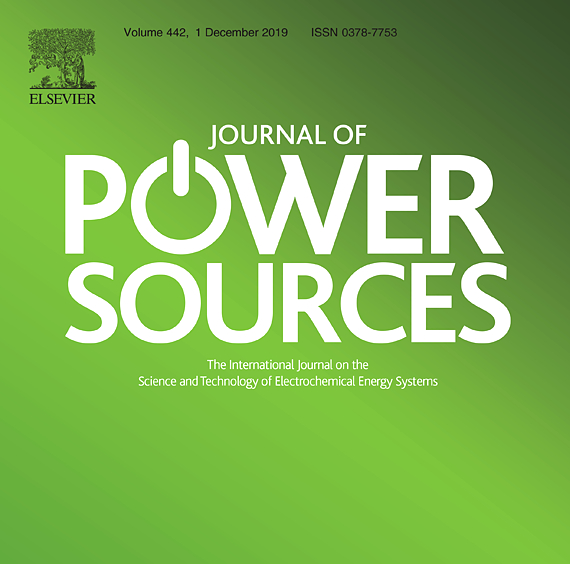
Stojić, D. Lj.; Marčeta, M P; Sovilj, S P; Miljanić, S S
Hydrogen generation from water electrolysis - Possibilities of energy saving Journal Article
In: Journal of Power Sources, vol. 118, no. 1-2, pp. 315-319, 2003, (Broj citata: 188).
@article{Stojić2003315,
title = {Hydrogen generation from water electrolysis - Possibilities of energy saving},
author = {D.Lj. Stojić and M P Marčeta and S P Sovilj and S S Miljanić},
url = {https://www.scopus.com/inward/record.uri?eid=2-s2.0-0038582373&doi=10.1016%2fS0378-7753%2803%2900077-6&partnerID=40&md5=3b6983e06e08f6793b52d88b1dcb8f96},
doi = {10.1016/S0378-7753(03)00077-6},
year = {2003},
date = {2003-01-01},
journal = {Journal of Power Sources},
volume = {118},
number = {1-2},
pages = {315-319},
abstract = {Hydrogen production via electrolysis of water from alkaline aqueous electrolytes is a well-established conventional technology. However, due to high energy requirements of about 4.5-5kWh/m n 3 H 2 in most industrial electrolysers, the cost of hydrogen produced in such a way is high. This is a limiting factor for the use of this method on a large scale, except in countries where the electricity is very cheap. There were various attempts to improve this process, like zero-gap cell geometry, development of new diaphragm materials, development of new electrocatalytic materials for electrodes, etc. We tried here to use ionic activators to reduce energy consumption. Two types of activators, both ethylenediamine complexes of cobalt, were used separately or in combination with some molybdates. The activation energies were significantly decreased in the presence of single ionic activators. However, the best results regarding the activation energy reduction were obtained when combinations with the molybdate were used. On the basis of the results of our experiments there is a strong indication that the activation with ionic activators reduces energy needs per mass unit of hydrogen produced for more than 10% in some cases, compared to those of non-activated electrolytes. © 2003 Elsevier Science B.V. All rights reserved.},
note = {Broj citata: 188},
keywords = {},
pubstate = {published},
tppubtype = {article}
}
1994
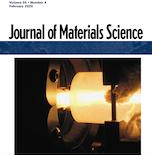
Mioč, U B; Dimitrijević, R Z; Davidović, M; Nedić, Z P; Mitrović, M M; Colomban, Ph.
Thermally induced phase transformations of 12-tungstophosphoric acid 29-hydrate: synthesis and characterization of PW8O26-type bronzes Journal Article
In: Journal of Materials Science, vol. 29, no. 14, pp. 3705-3718, 1994, (Broj citata: 103).
@article{Mioč19943705,
title = {Thermally induced phase transformations of 12-tungstophosphoric acid 29-hydrate: synthesis and characterization of PW8O26-type bronzes},
author = {U B Mioč and R Z Dimitrijević and M Davidović and Z P Nedić and M M Mitrović and Ph. Colomban},
url = {https://www.scopus.com/inward/record.uri?eid=2-s2.0-0028465293&doi=10.1007%2fBF00357338&partnerID=40&md5=9fd14e24fe3d701cd90f886f1ad7184b},
doi = {10.1007/BF00357338},
year = {1994},
date = {1994-01-01},
journal = {Journal of Materials Science},
volume = {29},
number = {14},
pages = {3705-3718},
abstract = {The phase transformations of 12-tungstophosphoric H3PW12O40-29H2O (29-WPA) acid in the temperature range from ambient temperature to 1150°C were investigated and characterized by differential thermal analysis (DTA), thermogravimetric analysis (TGA), differential scanning calorimetry (DSC), X-ray powder diffraction (XRPD), scanning electron microscopy (SEM), infrared (i.r.) and Raman spectroscopies. From room temperature to 550°C, 29-WPA passes through a dehydration process, which characterizes the formation of different crystallohydrates, in anhydrous form as well as "denuded" Keggin's anions, the D-phase (PW12O38). During these processes, Keggin's anions are not disturbed too much and they are preserved up to about 550°C. The "D" phase is transformed by solid-solid recrystallization at about 600°C in a new monophosphate bronze type compound PW8O26. Unit cell dimensions were calculated from XRPD data (ao=0.7515 nm). With the temperature increasing up to 1150°C, novel synthesized cubic bronze passed through three polymorphous phase transitions. According to a general formula for monophosphate tungsten bronzes (WO3)2m (PO4)4 all four polymorphs have m=16. © 1994 Chapman & Hall.},
note = {Broj citata: 103},
keywords = {},
pubstate = {published},
tppubtype = {article}
}
1990
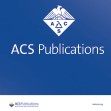
Karge, Hellmut G.; Dondur, Vera
Investigation of the distribution of acidity in zeolites by temperature-programmed desorption of probe molecules. I. Dealuminated mordenites Journal Article
In: J. Phys. Chem., vol. 94, no. 2, pp. 765-772, 1990, (Rad sa preko 100 citata).
@article{Karge1990,
title = {Investigation of the distribution of acidity in zeolites by temperature-programmed desorption of probe molecules. I. Dealuminated mordenites},
author = {Hellmut G. Karge and Vera Dondur},
doi = {https://doi.org/10.1021/j100365a047},
year = {1990},
date = {1990-01-01},
journal = {J. Phys. Chem.},
volume = {94},
number = {2},
pages = {765-772},
abstract = {The acidity of dealuminated hydrogen mordenites (Si/A1 = 12-39) is characterized by the temperature-programmed desorption of ammonia or pyridine which is monitored through a mass spectrometer. Four types of sites are indicated by ammonia desorption, viz., weak and strong sites of Bronsted and Lewis type, whereas pyridine desorption reveals only the existence of three types of acidic sites which are tentatively assigned to one sort of Bronsted site and weak and strong Lewis centers.
Evaluation of the desorption spectra provides the temperatures of maximum rate of desorption, the population of the respective sites, the desorption rates as a function of the activation energies of desorption, and, finally, probability functions of the activation energies. The results are discussed in terms of coverage, Si/Al ratio, and accessibility.},
note = {Rad sa preko 100 citata},
keywords = {},
pubstate = {published},
tppubtype = {article}
}
Evaluation of the desorption spectra provides the temperatures of maximum rate of desorption, the population of the respective sites, the desorption rates as a function of the activation energies of desorption, and, finally, probability functions of the activation energies. The results are discussed in terms of coverage, Si/Al ratio, and accessibility.
1989
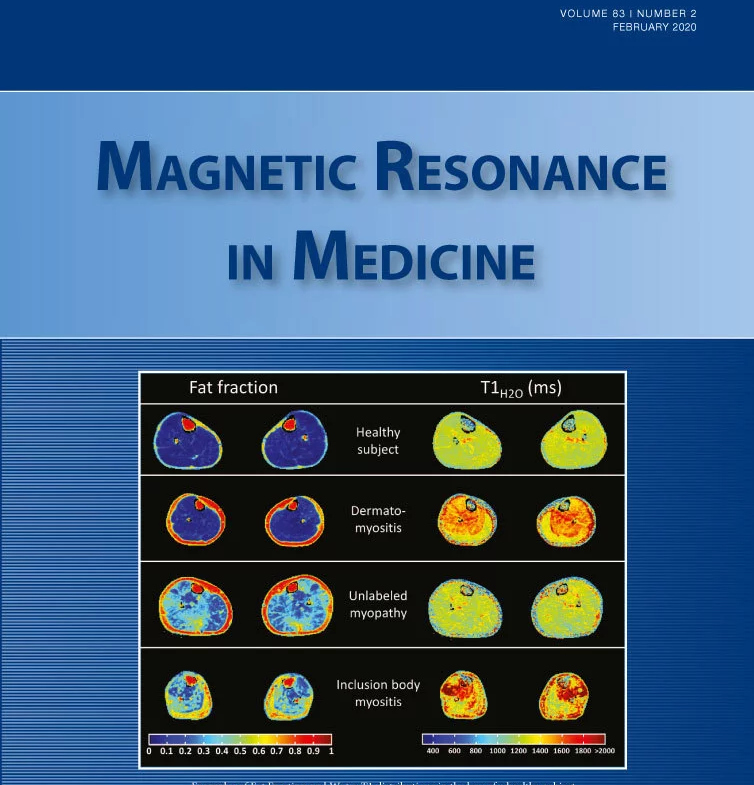
Bacic, G; Nilges, M J; Magin, R L; Walczak, T; Swartz, H M
In vivo localized ESR spectroscopy reflecting metabolism Journal Article
In: Magnetic Resonance in Medicine, vol. 10, no. 2, pp. 266-272, 1989, (Broj citata: 102).
@article{Bacic1989266,
title = {In vivo localized ESR spectroscopy reflecting metabolism},
author = {G Bacic and M J Nilges and R L Magin and T Walczak and H M Swartz},
url = {https://www.scopus.com/inward/record.uri?eid=2-s2.0-0024588654&doi=10.1002%2fmrm.1910100211&partnerID=40&md5=0f3bccae0e2c2bb858189b39a92ada62},
doi = {10.1002/mrm.1910100211},
year = {1989},
date = {1989-01-01},
journal = {Magnetic Resonance in Medicine},
volume = {10},
number = {2},
pages = {266-272},
abstract = {Localized electron spin resonance spectroscopy in Live mice was performed using a surface coil operating at 1.1 GHz with sufficient sensitivity and stability to measure quantitatively the time course of the distribution, uptake, and reduction of nitroxides in selected organsfregions (liver, bladder, head) of mice. The ability to measure regional concentrations of nitroxides in vivo could be used for pharmacokinetic analysis of drugs labeled with nitroxides and for measurement of oxygen concentrations and redox metabolism. © 1989 Academic Press, Inc. Copyright © 1989 Wiley‐Liss, Inc., A Wiley Company},
note = {Broj citata: 102},
keywords = {},
pubstate = {published},
tppubtype = {article}
}
1969
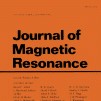
Woods, Ronald K; Bacic, Goran G; Lauterbur, Paul C; Swartz, Harold M
Three-dimensional electron spin resonance imaging Journal Article
In: Journal of Magnetic Resonance, vol. 84, pp. 247-254, 1969, (Ovo je prvi objavljeni rad o 3D EPR imidžingu. Pored prof. Bačića, jedan od ko-autora na radu je i Pol Lauterbur, dobitnik Nobelove nagrade iz fiziologije ili medicine 2003. godine).
@article{Bacic1969,
title = {Three-dimensional electron spin resonance imaging},
author = {Ronald K Woods and Goran G Bacic and Paul C Lauterbur and Harold M Swartz},
url = {https://www.sciencedirect.com/science/article/pii/0022236489903685},
doi = {https://doi.org/10.1016/0022-2364(89)90368-5},
year = {1969},
date = {1969-11-11},
journal = {Journal of Magnetic Resonance},
volume = {84},
pages = {247-254},
abstract = {Three - dimensional electron spin resonance images have been obtained by reconstruction from projections, permitting unambiguous determinations of the distribution of unpaired electrons in several complex objects. Examples of applications to several objects are presented.},
note = {Ovo je prvi objavljeni rad o 3D EPR imidžingu. Pored prof. Bačića, jedan od ko-autora na radu je i Pol Lauterbur, dobitnik Nobelove nagrade iz fiziologije ili medicine 2003. godine},
keywords = {},
pubstate = {published},
tppubtype = {article}
}
1961
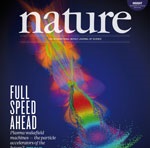
Veljkovic, Slobodanka; Harbottle, Garman
Recoil-Atom Reactions at Low Temperature Journal Article
In: Nature, vol. 191, pp. 1287-1288, 1961, (Rad objavljen u časopisu NATURE).
@article{Veljkovic1961,
title = {Recoil-Atom Reactions at Low Temperature},
author = {Slobodanka Veljkovic and Garman Harbottle},
url = {https://www.nature.com/articles/1911287b0},
doi = {10.1038/1911287b0},
year = {1961},
date = {1961-09-23},
journal = {Nature},
volume = {191},
pages = {1287-1288},
abstract = {CHEMICAL effects attending transformations of the nuclei of atoms in solids have been observed in a large number of systems1. Such effects are attributed to nuclear recoil, inner shell ionization followed by an Auger cascade, or nuclear charge change, for example in β-decay. Atoms which have transformed may be found in their original chemical form2 or in altered chemical states. The percentage of radioactive atoms found in the original chemical form has been called the ‘retention’ by Libby2. A recoil atom of the latter type may be considered a defect in the crystalline lattice, and in analogy with thermal annealing reactions of defects, for example interstitial atoms, produced by heavy particles of γ-ray bombardment3, the application of heat to crystals containing recoil atoms frequently changes the observed distribution of chemical species1. In general, annealing reactions of recoil atoms tend to restore those atoms to their original (‘parent’) chemical form. Recoil reactions following slow neutron capture are known as Szilard–Chalmers reactions, after the discoverers of this effect4.},
note = {Rad objavljen u časopisu NATURE},
keywords = {},
pubstate = {published},
tppubtype = {article}
}
